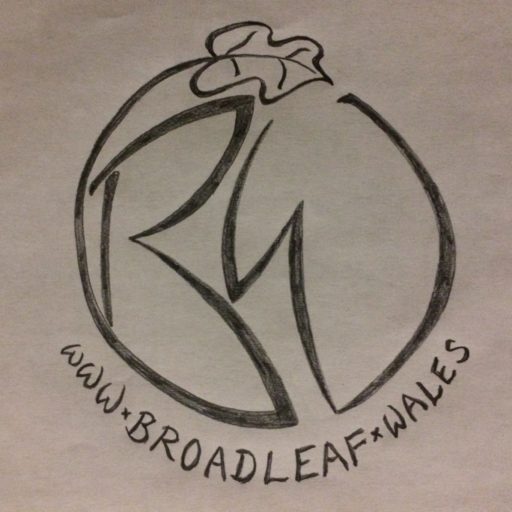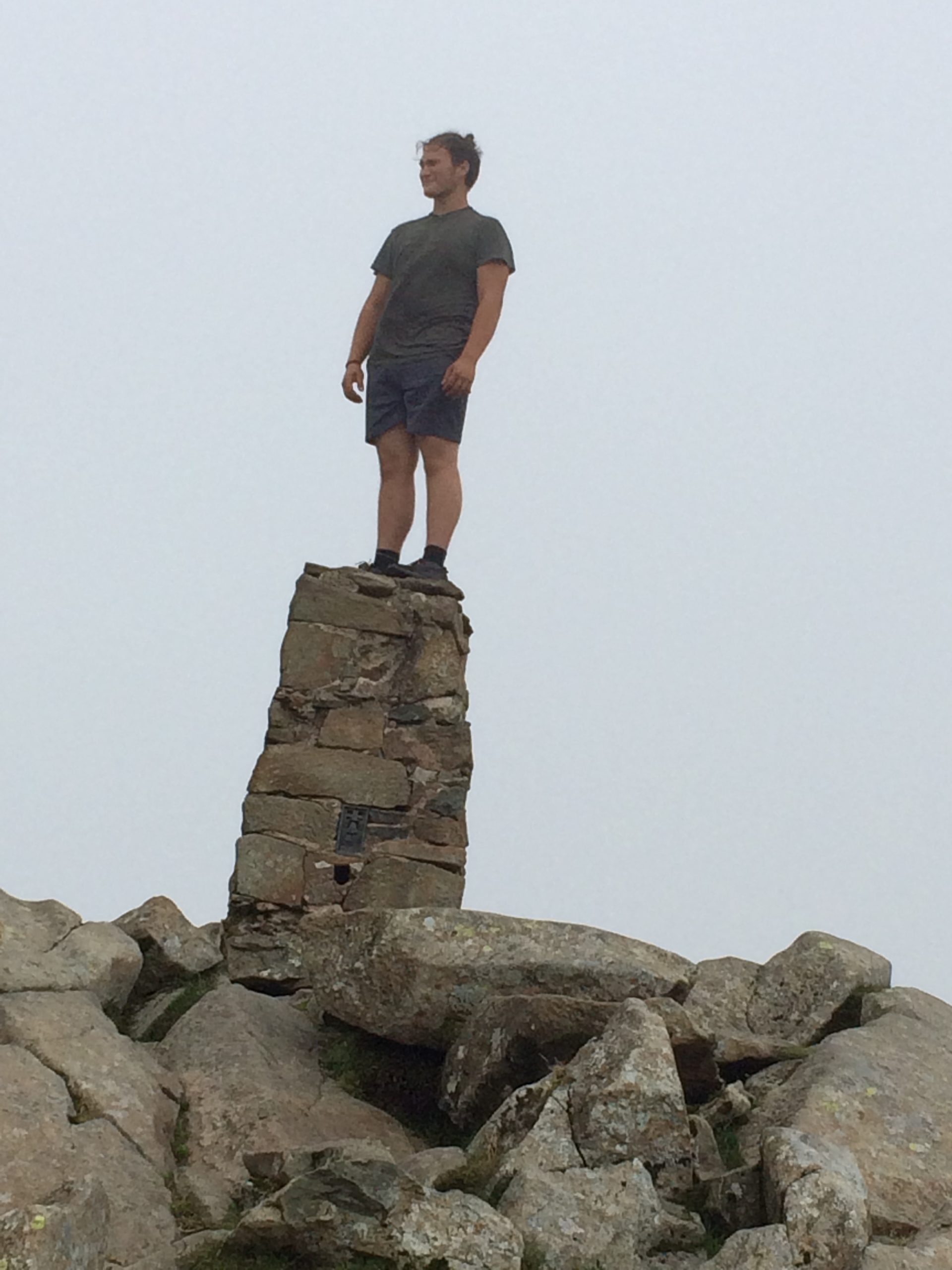
Reaching the peak at the end of Forestry Roots – a 50 mile bike ride into Snowdonia with a quick hike up Moel Siabod
I’m coming toward the end of my year with Broadleaf Wales under the RFS (Royal Forestry Society) Forestry Roots scheme and I think this is a good time to reflect on my past in forestry and to think about the future that lies ahead. Prior to my placement at Bron Haul, I began my forestry journey at around 13 years old. Struggling with focus and behavioural issues in mainstream education, I was enrolled on many external sources of education, the most significant of which was the Sustainable Land Trust. This was an opportunity to work with land managers and to learn the benefits and methods of a wide range of processes that focused on improving biodiversity and monitoring how our actions would benefit wildlife and ecology. This was a concept I hadn’t been exposed to before and this new outlet helped me mature but also gave me a newfound love for working outdoors and enhancing the environment around me.

The Kay Family woodland vegetation control day
With a strong mentor and motivation in the land-based sector, I finished my GCSE’s and went to Brooksby Melton college where I spent 2 years in a Countryside Management course. Parts of the course were made difficult due to the pandemic but overall it gave me access to a wide range of information, gaining a better understanding of the processes of nature and how to best work towards a greener future. At college we talked about concepts large and small, we were exposed to habitat productivity, regenerative farming and many different types of habitat to enhance. Here we also worked on practical exercises which showed skills in estate management, planning, ecology and more. Most excitingly we were able to work on the start of an agroforestry plan, one of the earlier examples in the country and it required precise measurement, planting and aftercare.
While at college I had the opportunity to do work placement and landed a job with a business that was responsible for vast amounts of thinnings, in and outside of Leicestershire. Here I sharpened my chainsaw skills after having passed my first ticket and spent time cutting stumps, pruning rides and processing firewood. Though I was thankful for the opportunity I was aware that I didn’t want to get trapped in this position and around the time my college course finished I also had stopped working there. Through this time I would be spending most of it alone or working with machines and felt as if I should strive for a more well rounded role with the opportunity to be responsible and to find out more about woodland management.
At this time I had also failed my first attempt at my small trees felling test and with the end of college i was struggling for direction. This is when my tutor extended the option of the RFS scheme to me, asked if I’d be willing to go to live and work in Wales, I accepted and things began to set into motion. My tutor opened things up for me and I wrote my first real CV and put every hope into being accepted to the next stage. In a zoom interview I had the opportunity to ask about the position and answered questions about what forestry meant to me. I felt reassured that David and Ruth were of a mentality I shared and became more excited for the prospect of working there. To hear positively afterwards was incredible and when they invited me for a few induction days I was nervously excited. What stands out most about those few days is the time we spent replacing a fence on another piece of land owned by a friend of theirs and how difficult I found it. It was in the height of summer that year and no matter what, I couldn’t seem to get the fencing staple to stay in the posts, but working as a team felt great. I also remember being taken aback during my tour of the Bron Haul woodlands, actually seeing broadleaf trees of that size and with such investment put in, these were concepts I’d heard of and spoke about but this was the first place I had seen that was planted and maintained for hardwood timber and successfully too.
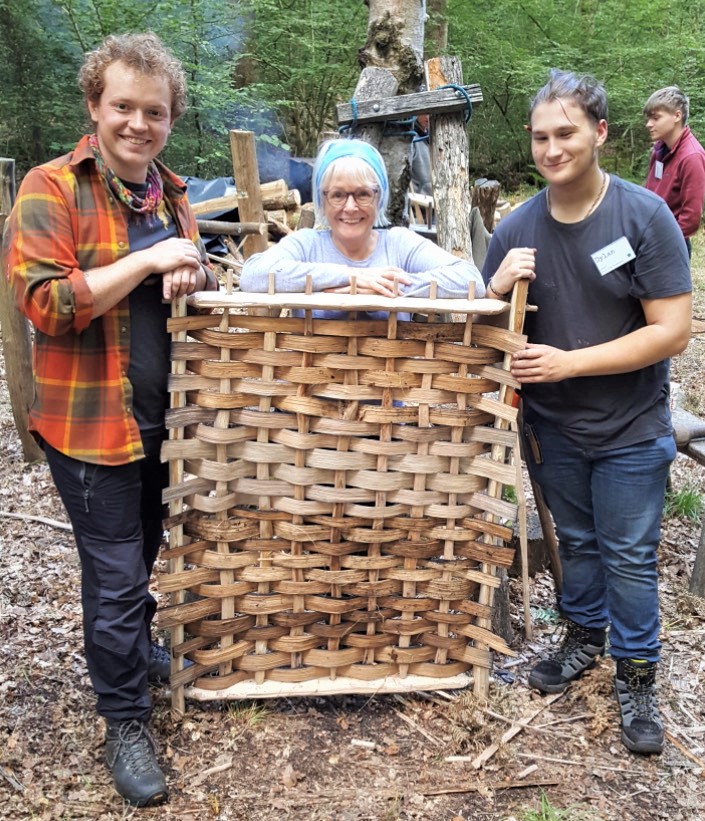
Woodland Pioneers – a crash course in green woodwork
When I was successfully offered the job I was so pleased and we began planning for me to start. Ruth suggested that we make use of my training grant right away with the BHMAT Woodland Pioneers course, with my 12 months beginning on the first day. I really enjoyed the experience and having this suggested by Ruth and David and them having been involved in the course previously assured me that the year to come would likely be enjoyable too. Then I moved over to Wales and got set up and started work, firstly finishing my accommodation for the year and then starting to work on pruning and respacing the young
plantation. What made up much of the first months was gathering the logs from the previous thinnings in some of the woods and getting them stacked at the roadside.
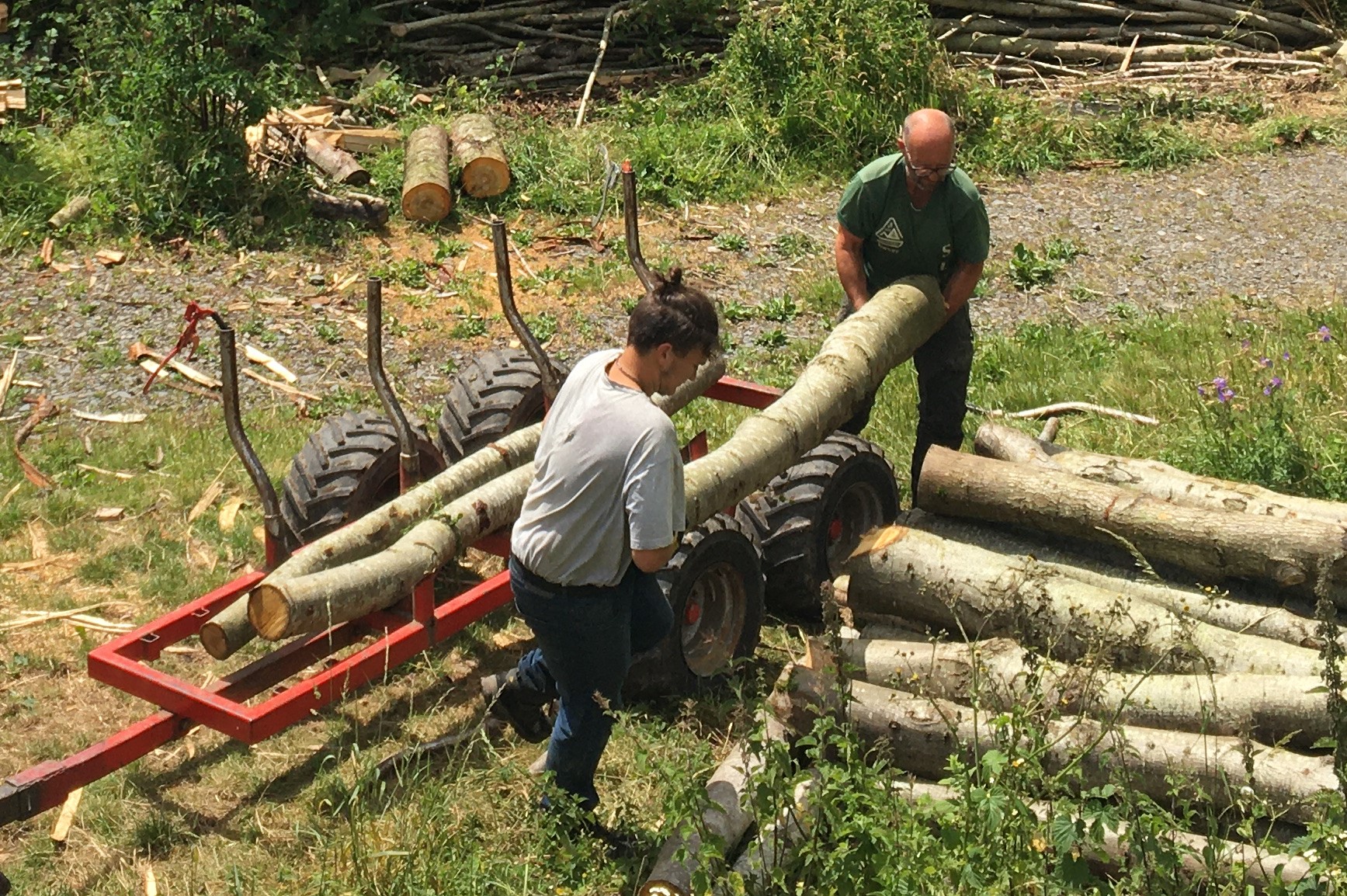
Unloading sweet chestnut ready for cleaving
Aside from our work in the woods I also had the opportunity to work with David on different timber projects, learning more about tools and joinery. We worked on chestnut styles but soon we all began working on the timber framing project. Carefully setting up the layouts we worked through the process and before long the frame was up. I think this was perhaps the project I enjoyed most, something about using our timber and going through the process was really pleasing for me. Getting to think 3 dimensionally and to work out problems and solve them and in the end creating something really impressive.
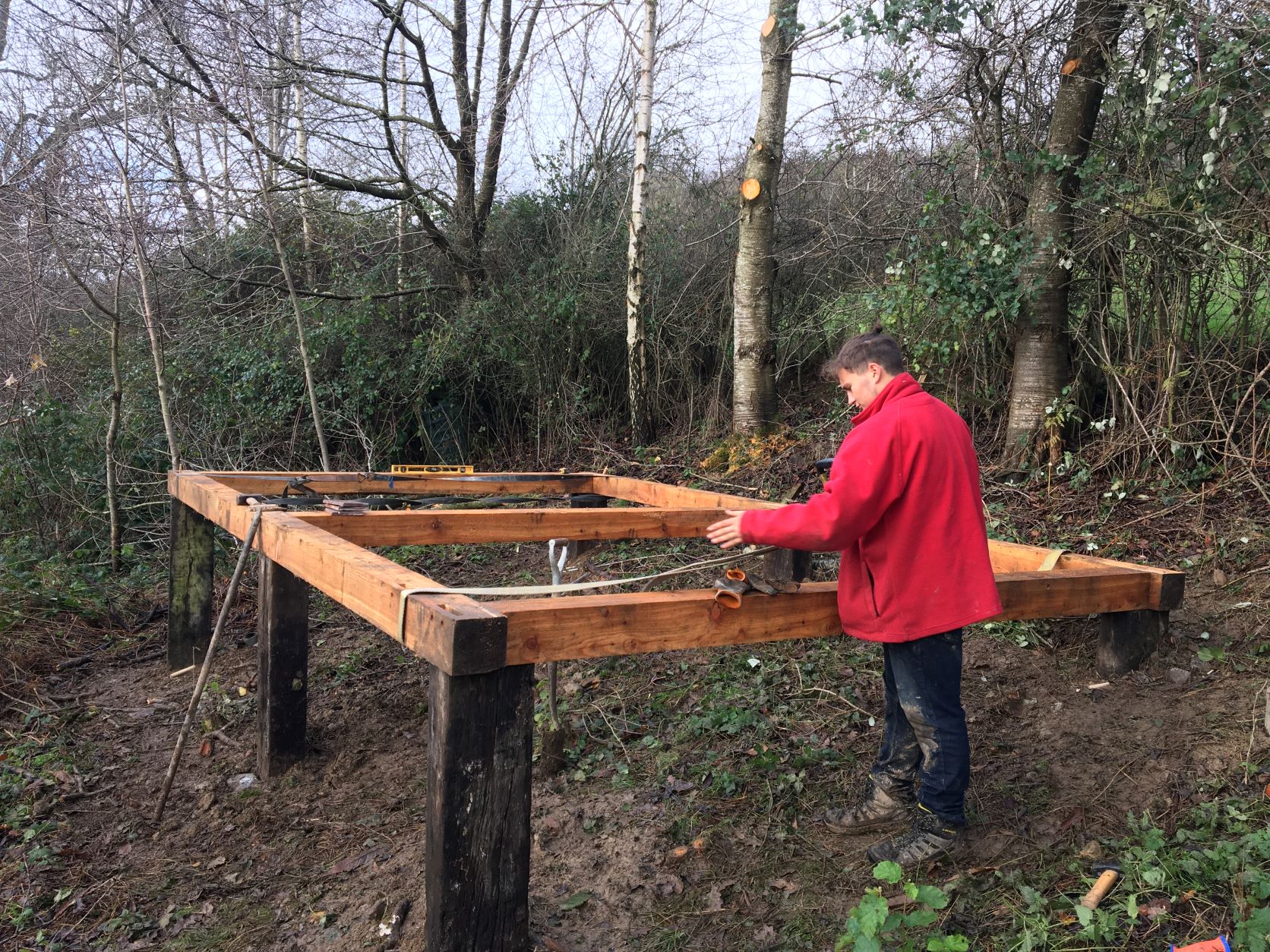
Preparing the timber frame sill
This brought us into the winter and through the winter months we worked on a felling plan in one of the subcompartments. We went through the woods with the paint and David and Ruth ran through the goals with me and we spoke about each decision. They explained how in this third thinning we were choosing the stems that would launch the woods into continuous cover forestry, through this we made sure to favour the trees of best quality but also to consider the final spacing as well as the diversity and the health of the tree since ash dieback now requires careful consideration. With some extra training in the woods I completed my small tree felling ticket and got stuck in with the thinning, we thinned to support our marked stems and with support my felling improved and I was able to work more independently. By the end of March we could consider the thinning complete and since then we have moved and sold most of the firewood and we have since sent our saw logs to the mill and put them ‘in stick’.
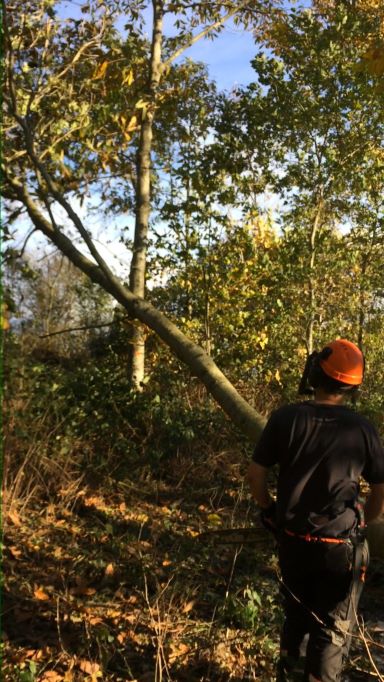
Precision fell between oak trees
Out of those woods we also had a generous crop of sweet chestnut which we’ve turned into fence posts, this is a skill I’ve developed over my time here and one I’d love to continue with. The use of hand tools is increasingly rare in many workplaces and it’s been a great opportunity to be able to gain this ability while creating products that outlast their machined and treated counterparts. Another thing that I will take with me from this placement is the outstanding importance of Grey Squirrel management within broadleaf woodland, having completed David’s LANTRA accredited course and since been a part of the management at Bron Haul I feel comfortable and motivated to apply the things I’ve learned as much as possible. While at Broadleaf.wales I’d had the opportunity for an independent project to work on weekly and this was the part of this year that I struggled with the most. With the seemingly infinite options and avenues, trying to manage my time and resources and find something that inspired me that would fit into the constraints, I found myself completely paralysed with indecision. While I completed some projects like a cherry wood box I had made with fine joinery techniques and a table and some other small projects, I struggled to find something with a progression I could hold onto. Mostly this has highlighted an aspect of my working life that I need to improve on and something that I need to address if I want to become a better, more independent worker.
Throughout the year I’ve also planted hedges and woodland blocks, I’ve repaired fences and drystone walls outside of the farm and I’ve produced many different products and I can say that each has been an incredible and indispensable experience and the environment in Broadleaf.Wales has been a catalyst for my growing forestry career. While here I’ve asked countless questions and I think the insight that David and Ruth have provided has been the best training I’ve received and having them as a resource with their experience has taught me so much. Overall this year has been the perfect opportunity for me, being on the other end of it with another job set up to go into and having enough skills and experience to have some confidence in what I know and what I can do. I think in my spending time here I have also found myself an amazing asset in my relationships with two of the best people that a young forester could be exposed to, and having them as examples I can live by and as friends I can work with will be priceless for my future.
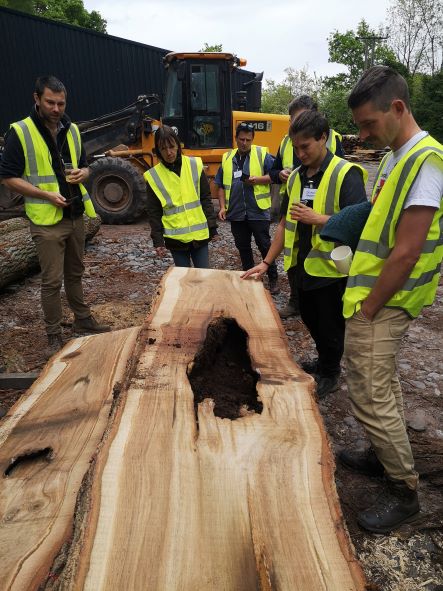
Assessing timber at Woodland to Workshop
As for advice for young people who may be interested in forestry, mine would probably be to not settle, my entire forestry experience has been due to my inability to settle for something I plainly couldn’t enjoy. While that character trait can be a limitation in many cases and one that you have to work through at times, it’s what allowed me to fall in love with learning again and to spend this year being paid for doing what I enjoy, something that will most likely continue for the rest of my life. To not settle and to take opportunities, even ones that seem scary is probably the best way of launching yourself into somewhere where you can surround yourself with mentors and peers and templates that you can learn from.
(Congratulations Dylan on being our fabulous first Forestry Roots worker. The progress you have made in a year is remarkable. We look forward to hearing how you get on in your new job at Mulgrave Estate – David & Ruth)
